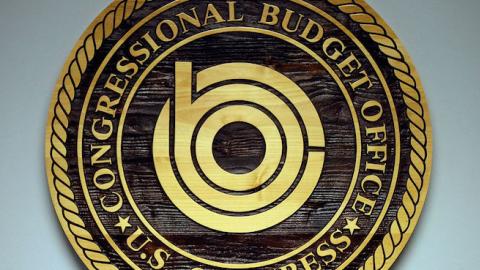Congressional members and staffers generally act like their fellow Americans sit around waiting for the Congressional Budget Office to release scoring of major legislative proposals, much like they await the release of March Madness brackets. The truth is that most Americans hardly care what the CBO says. Moreover, they are right not to care: The CBO is often wildly off.
This has certainly been true on Obamacare. Seven years ago this month, the Democrats rammed President Obama’s namesake through the House of Representatives without a single Republican vote and with only three Democratic votes to spare. At the time, the CBO said that in 2017, 23 million people would be enrolled in insurance that they acquired through Obamacare's government-run exchanges. Well, 2017 is here, and the actual tally is 9.2 million. So the CBO missed its projection by some 14 million people and a whopping 60 percent. That's not even close enough for government work.
The CBO tends to assume that if the federal government isn't compelling someone to do something, it won't happen. So if employers aren't mandated to offer insurance, they won't. If Americans aren't mandated to buy insurance, they won't. To be sure, the CBO does grant that some private employers and some private citizens actually exercise free will. Nevertheless, the CBO plainly believes in, and is a part of, Big Government.
Evidence of this is found in the fact that the CBO generally omits a huge category in its Obamacare scoring: its effect on federal spending. It lists Obamacare's "gross cost of coverage provisions," but that counts tax breaks and federal spending as being one and the same. Maybe that's just as well, since the CBO falsely scores Obamacare's direct outlays to insurance companies as "tax credits," and hence (when the person getting the insurance is someone who actually pays income tax) as "tax cuts"—hiding some $104 billion in federal spending in the process. The fact that the CBO generally doesn't offer a clear tally for federal spending speaks volumes.
As congressional members and staffers from both parties wait with bated breath for the CBO to score the newly released House Republican health-care bill (part of which is here and part of which is here), they would do well to remind themselves that (A) the CBO's score will most likely be wildly off, (B) most Americans don't much care what the CBO thinks, and (C) those who debate and pass legislation should focus on whether it would be good policy that can be communicated to the American people on its own grounds, not on the grounds of the CBO's generally dubious scoring.
Correction: The tally of 9.2 million people enrolled in insurance acquired through the Obamacare exchanges only includes the 39 states that use the healthcare.gov platform. Adding in the other 11 states (plus Washington, D.C.) would raise that tally to approximately 12 million people. So the CBO was off by about 48 percent in its projections, rather than 60 percent. As attrition occurs throughout the year, however, dropping the enrollment tally below 12 million, the amount by which the CBO was off will rise accordingly.




















